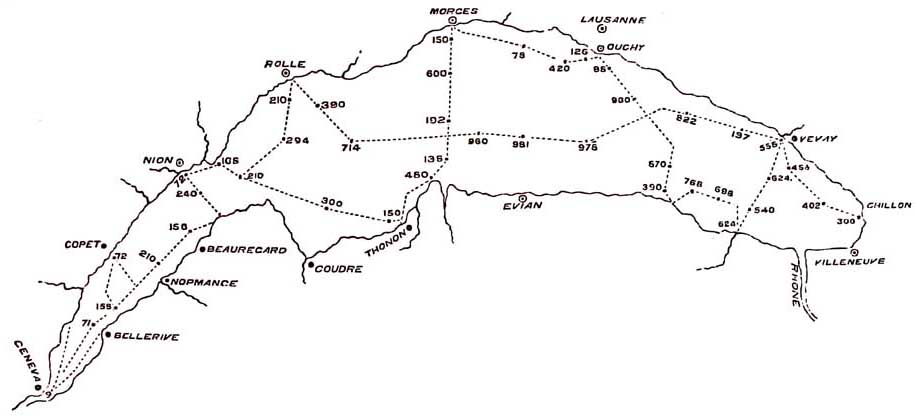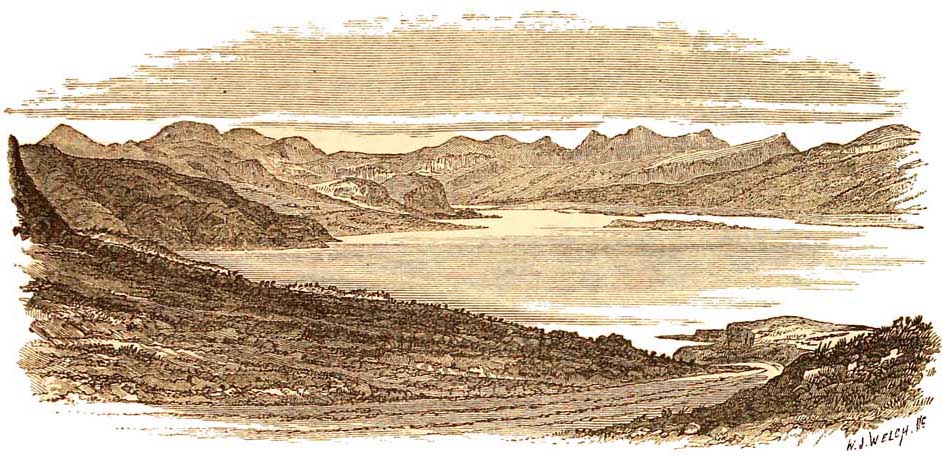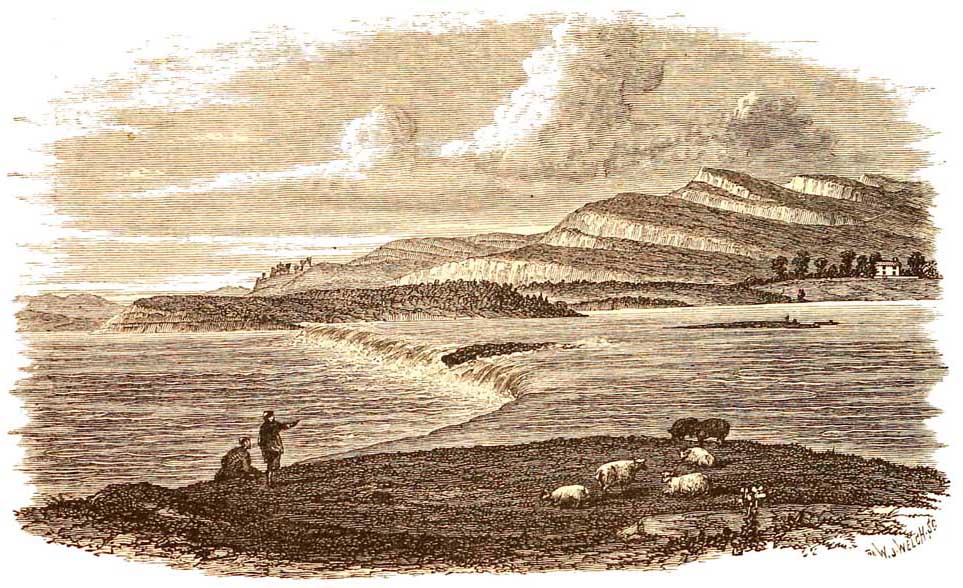
Lake of Geneva and Soundings.
FIG. 93.



The shaded part represents the rock-basin beneath the lake. The dark line the lake, showing its depts on a true scale. The light part above represents the Old Glacier of the Rhone. Figures, depth of the lake in feet.

